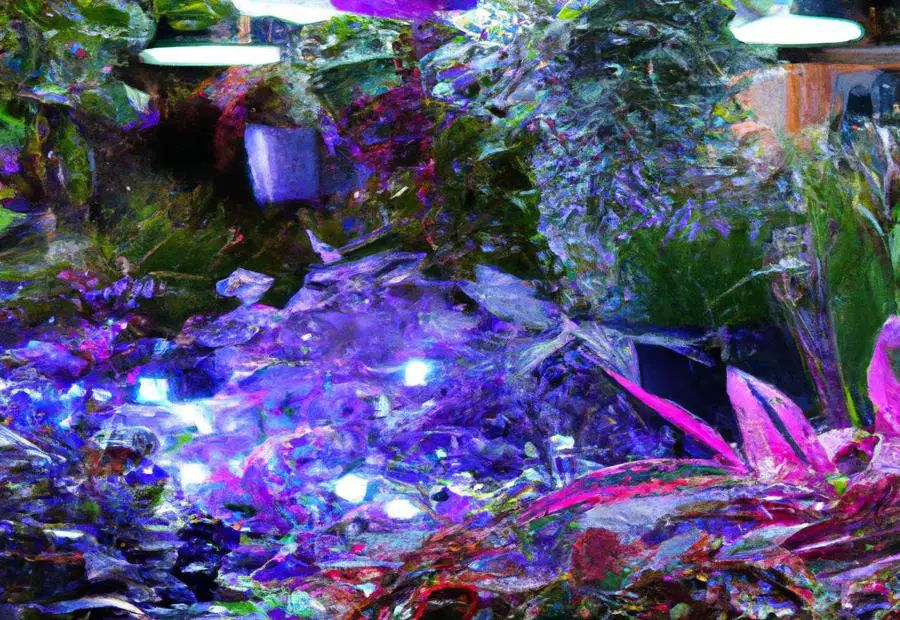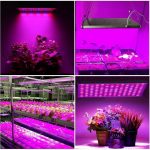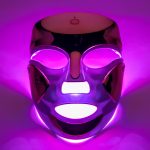Last Updated on 10 months by Francis
.jpg)
LED grow lights have gained significant popularity in recent years for their effectiveness in promoting plant growth and providing artificial light in indoor gardening. However, there is often confusion about whether these lights can also cause tanning effects on human skin. In order to understand this, it is important to delve into how LED grow lights work and how tanning occurs.
LED grow lights are designed to emit specific wavelengths of light that are optimal for plant photosynthesis. They provide the necessary light spectrum that plants need for various stages of growth. On the other hand, tanning is the process of the skin darkening due to exposure to ultraviolet (UV) radiation, mainly from the sun.
The question arises: can you get a tan from LED grow lights? The answer is no. LED grow lights primarily emit light in the visible range and do not emit significant amounts of UV radiation necessary for tanning. It is important to understand the spectrum of LED grow lights and how they differ from natural sunlight.
LED grow lights are specifically designed to provide the right balance of wavelengths for plant growth, focusing on blue and red light. These lights do not emit the same levels of UV radiation as the sun, which is responsible for tanning. Therefore, the risk of getting a tan from LED grow lights is minimal.
However, it is crucial to consider potential side effects of LED grow lights, especially when used in close proximity to the skin. Eye safety and protection should be a priority, as prolonged exposure to bright LED lights can cause eye strain and damage. individuals with photosensitivity or sensitive skin may experience irritation or sensitivity to the light emitted by LED grow lights.
Contents
Key takeaway:
- LED grow lights do not produce tanning effects: Unlike natural sunlight, LED grow lights do not emit the specific spectrum of UV rays required for tanning.
- LED grow lights are designed for plant growth: These lights are optimized for providing the right spectrum and intensity of light needed for photosynthesis and plant development, not for tanning human skin.
- Using LED grow lights safely: While LED grow lights are generally safe for indoor use, it is important to follow safety precautions and avoid excessive exposure to the light to protect your eyes and skin.
How Do LED Grow Lights Work?

Photo Credits: Infraredforhealth.Com by Peter Anderson
LED grow lights work by harnessing the power of light-emitting diodes (LEDs) to supply plants with the optimal light spectrum needed for photosynthesis. These lights emit specific wavelengths of light, particularly red and blue, which are essential for promoting plant growth and development.
Designed to replicate natural sunlight, LED grow lights can be customized to cater to the specific needs of different plants. They are adjustable, allowing for the perfect balance of light intensity and duration, ultimately promoting optimal growth. Moreover, LED lights possess energy-efficient qualities, consuming less electricity compared to conventional grow lights.
The red light emitted by LED grow lights is particularly beneficial during the flowering and fruiting stages of plants. It not only stimulates photosynthesis but also encourages the production of chlorophyll. On the other hand, blue light plays a crucial role during the vegetative stage by promoting leaf and stem growth. By combining red and blue light, LED grow lights offer comprehensive support to plants throughout their entire growth cycle.
When selecting LED grow lights, it is vital to consider the wattage and coverage area they provide. Higher wattage lights are ideal for covering larger spaces, while lower wattage lights are more suitable for smaller areas. Additionally, it is essential to take into account the specific light spectrum requirements of the plants being grown.
What Is Tanning and How Does It Occur?

Photo Credits: Infraredforhealth.Com by Andrew Martinez
Tanning is a process in which the skin darkens due to exposure to ultraviolet (UV) radiation. When UV rays from the sun or tanning beds penetrate the skin, they stimulate the production of melanin, a pigment that gives color to the skin. This melanin production is the body’s natural defense mechanism against further damage from UV radiation.
When the skin is exposed to UV radiation, it triggers the melanocytes, which are cells in the epidermis, to produce more melanin. The melanin is then distributed to the surrounding skin cells, causing them to darken. This darkening of the skin is what we commonly refer to as a tan.
Tanning can occur quickly, within minutes of exposure to UV radiation, or it can develop gradually over a period of time if the exposure is less intense. It is important to note that prolonged exposure to UV radiation, whether from the sun or tanning beds, can increase the risk of skin damage, premature aging, and skin cancer.
Throughout history, the desire for a bronzed complexion has been present in various civilizations. In ancient Egypt, for example, tanning was associated with higher social status, as it indicated that individuals did not engage in laborious outdoor work. In the early 20th century, tanned skin became a symbol of leisure and luxury, as more people started vacationing in sunny destinations.
Understanding the process of tanning and its potential risks can help individuals make informed decisions about their sun exposure and use of tanning beds. It is essential to protect the skin from excessive UV radiation by wearing sunscreen, protective clothing, and seeking shade during peak sun hours.
Can You Get a Tan from LED Grow Lights?
Can you really achieve that sun-kissed glow using LED grow lights? Let’s dive into the world of LED grow lights and find out if they can give you a tan.
In this section, we’ll explore the spectrum of LED grow lights and how it compares to natural sunlight. Get ready to uncover the fascinating facts and discover whether you can achieve that bronzed look with the help of LED technology.
Understanding the Spectrum of LED Grow Lights
Understanding the spectrum of LED grow lights is essential for optimizing plant growth and development. LED grow lights emit light in specific wavelengths, which can be categorized into different color bands: blue, red, and sometimes white. These colors play a crucial role in photosynthesis and impact plant morphology and flowering.
| Color Band | Wavelength Range | Role in Plant Growth |
| Blue | 400-500 nm | Stimulates chlorophyll production, promotes vegetative growth, and can enhance root development. |
| Red | 600-700 nm | Crucial for flowering, fruiting, and overall plant development. Red light is often used during the flowering stage of plants. |
| White | Full Spectrum | Provides a broad range of light wavelengths that are essential for various plant processes, including photosynthesis, growth, and development. |
Understanding the spectrum of LED grow lights allows growers to customize the light intensity and spectrum to meet the specific needs of different plants and growth stages. By adjusting the balance of blue and red light, growers can promote specific growth characteristics such as compactness, branching, or flowering.
To achieve optimal results, it is important to choose LED grow lights that provide the appropriate spectrum for the specific crops being cultivated. Additionally, understanding the individual light requirements of different plants will help ensure they receive the necessary light for healthy growth.
When using LED grow lights, it is crucial to monitor the light intensity, duration, and distance from the plants to prevent any potential damage or stress. Regularly assessing plant health and adjusting the lighting accordingly can lead to successful cultivation and optimized plant growth.
As we delve into the topic of understanding the spectrum of LED grow lights, it becomes evident that light plays a crucial role in the growth and development of plants. By utilizing the specific wavelengths emitted by LED grow lights, growers can manipulate plant growth, flowering, and overall health. It is essential to choose LED grow lights that offer the right spectrum for the crops being grown and to monitor light intensity and duration to avoid any potential damage. Remember to regularly assess the plant’s health and adjust the lighting accordingly to ensure optimal growth. So, next time you’re setting up your indoor garden, delve into the world of LED grow lights and harness their power to cultivate thriving plants.
Comparison of LED Grow Lights to Natural Sunlight
|
Comparison of LED Grow Lights to Natural Sunlight |
|
|---|---|
|
LED Grow Lights |
Natural Sunlight |
|
1. Spectrum |
1. Broad Spectrum |
|
– LED Grow Lights predominantly feature blue and red wavelengths |
– Natural sunlight contains all visible wavelengths |
|
– LED Grow Lights are optimized for plant growth |
– Natural sunlight provides balanced light for various organisms |
|
– LED Grow Lights can be adjusted to specific plant needs |
– Natural sunlight cannot be adjusted |
|
2. Intensity |
2. Varies with time of day and weather conditions |
|
– LED Grow Lights can be controlled and consistent |
– Natural sunlight changes throughout the day |
|
– LED Grow Lights can provide high intensity for indoor cultivation |
– Natural sunlight is highest around midday on a clear day |
|
3. Energy Efficiency |
3. Varies with natural sunlight availability |
|
– LED Grow Lights are highly energy-efficient |
– The energy efficiency of natural sunlight depends on geographic location |
|
– LED Grow Lights waste less energy as heat |
– Some energy from natural sunlight is lost as heat |
|
– LED Grow Lights can be customized for specific plant growth stages |
– Natural sunlight is not customizable for different plant needs |
Potential Side Effects of LED Grow Lights
LED grow lights have revolutionized indoor gardening, offering the perfect balance of light for optimal plant growth. However, it’s important to be aware of potential side effects that may arise. In this section, we’ll explore two key areas of concern: eye safety and protection, as well as skin sensitivity and photosensitivity. Get ready to uncover the essential facts and practical tips that will help you harness the power of LED grow lights while keeping yourself and your plants healthy.
Eye Safety and Protection
LED grow lights can pose potential risks to the eyes if proper safety measures are not taken. The intense light emitted by these lights can cause damage to the retina and the sensitive cells in the eyes. It is crucial to prioritize eye safety and protection when working with or being exposed to LED grow lights.
To ensure the safety and protection of your eyes, it is important to consider the following measures:
1. Wear protective eyewear designed for eye safety and protection: When working with LED grow lights, make sure to wear goggles or safety glasses specifically designed to block the harmful wavelengths of light. These protective eyewear options are readily available and can significantly reduce the risk of eye damage.
2. Limit your exposure time: It is advisable to avoid prolonged direct exposure to LED grow lights. Take regular breaks to rest your eyes and minimize the cumulative impact of the light on your eyes.
3. Maintain a safe distance: Keeping a safe distance between yourself and the LED grow lights can help reduce the intensity of the light reaching your eyes, thereby decreasing the potential harm.
4. Shield reflective surfaces: To prevent glare or additional exposure, cover any reflective surfaces around the grow lights. This will help minimize the light from bouncing back into your eyes.
By following these precautions, you can effectively protect your eyes from potential harm while working with LED grow lights.
Pro-tip: For optimal protection and ensuring the safety of your eyes, it is recommended to invest in high-quality protective eyewear specifically designed for working with grow lights.
Skin Sensitivity and Photosensitivity
LED grow lights have the potential to cause skin sensitivity and photosensitivity. When exposed to these lights, the skin may become more reactive and prone to irritation or redness, especially for individuals with sensitive skin. The severity of these effects can be influenced by the intensity and duration of exposure. It is important to monitor the reaction of your skin and take necessary precautions to protect it.
To minimize the risk of skin sensitivity and photosensitivity, it is recommended to limit your exposure to LED grow lights. Wearing clothing that covers your skin, applying sunscreen with a high SPF, and using sunglasses to protect your eyes are all recommended protective measures. Additionally, taking breaks from exposure to allow your skin to recover can help mitigate any potential adverse effects.
It is important to note that the reaction to LED grow lights may vary from person to person, with some individuals being more susceptible to skin sensitivity and photosensitivity than others. If you experience persistent or severe skin reactions after exposure to LED grow lights, it is advisable to consult a dermatologist for further evaluation and guidance.
By being aware of the potential for skin sensitivity and photosensitivity, you can take appropriate measures to protect your skin while using LED grow lights.
Some Facts About Can You Get a Tan from LED Grow Lights:
- ✅ Grow lights can produce UV radiation, which is responsible for sun tanning. (Source: The Cannabis Rainbow)
- ✅ Metal halide (MH) grow lights emit more UV radiation than high pressure sodium (HPS) lights. (Source: The Cannabis Rainbow)
- ✅ UVB radiation from grow lights can increase the THC concentration in marijuana plants. (Source: The Cannabis Rainbow)
- ✅ Some growers remove the glass casing of grow lights to expose plants to more UVB radiation, believing it can enhance the potency of marijuana. (Source: The Cannabis Rainbow)
- ✅ While it is theoretically possible to get a tan from LED grow lights with UV diodes, it is not recommended and can pose various dangers to human health. (Source: Grow Light Info)
Frequently Asked Questions
Can you get a tan from LED grow lights?
Getting a tan from LED grow lights is theoretically possible if they have UV diodes; however, it is not recommended. LED grow lights are primarily designed to provide specific wavelengths of light for plant growth and may not emit enough UV radiation for effective tanning.
Is there direct evidence linking LED grow lights to tanning?
There is no direct evidence linking LED grow lights to tanning. While UV radiation is responsible for tanning, the amount and intensity of UV emitted by LED grow lights may not be sufficient to induce tanning reactions in human skin.
Can indoor grow lights, such as HID lights, give you a sun tan?
Indoor grow lights, especially HID lights like metal halide (MH) or high pressure sodium (HPS) lights, can emit UV radiation. However, it is important to note that their primary purpose is to provide light energy for plant growth, and the amount of UV radiation emitted may not be enough to produce a significant sun tan.
Are there health risks associated with using grow lights for tanning purposes?
Yes, using grow lights for tanning purposes can pose several health risks. High levels of UV exposure can lead to sunburn, premature aging, and increase the risk of skin cancer. In addition, grow lights can cause eye strain and heat exhaustion if used improperly. It is essential to use proper protective measures and limit UV exposure when using grow lights.
An interesting study conducted by the Barcelona Institute found a potential link between LED light exposure and an increased risk of prostate and breast cancer. However, this study had limitations and did not prove causation. The discussion surrounding grow lights and cancer is often fueled by those trying to sell non-LED lights or other products.
How can I sign up or create a new account on UK420 to contribute my own content?
To sign up and create a new account on UK420, you can visit their website and look for the option to register. By filling out the required information, you can easily create your account and gain access to various features such as posting comments, customizing your profile, and engaging with other members through a private inbox.


.jpg)
.jpg)
.jpg)



